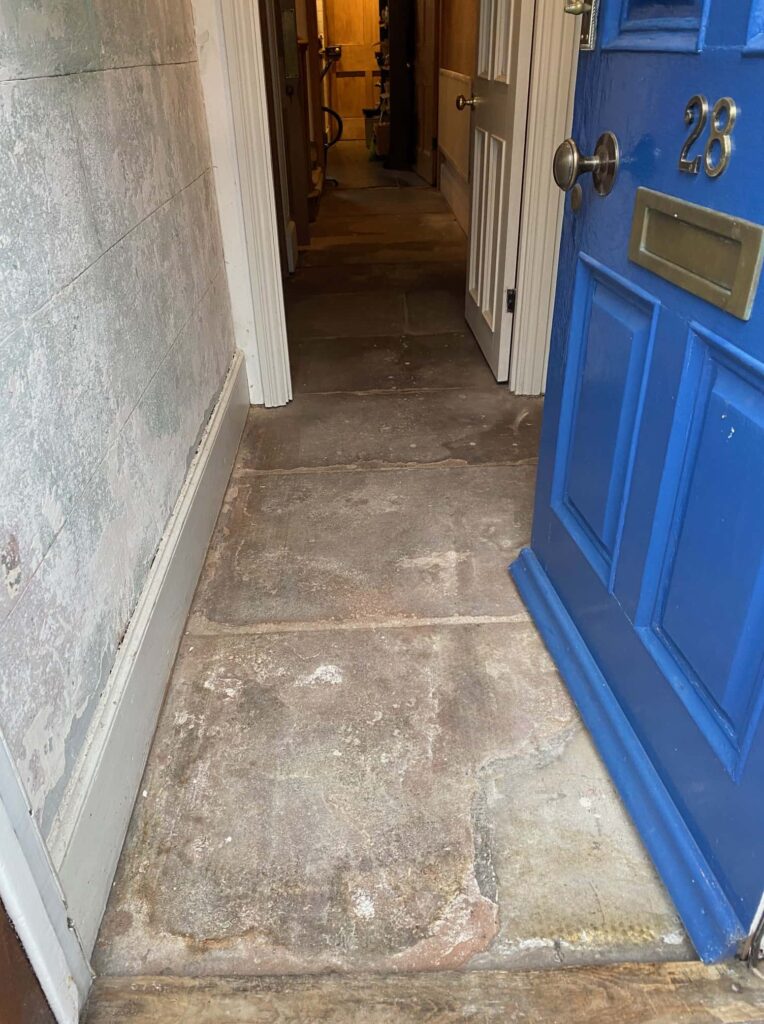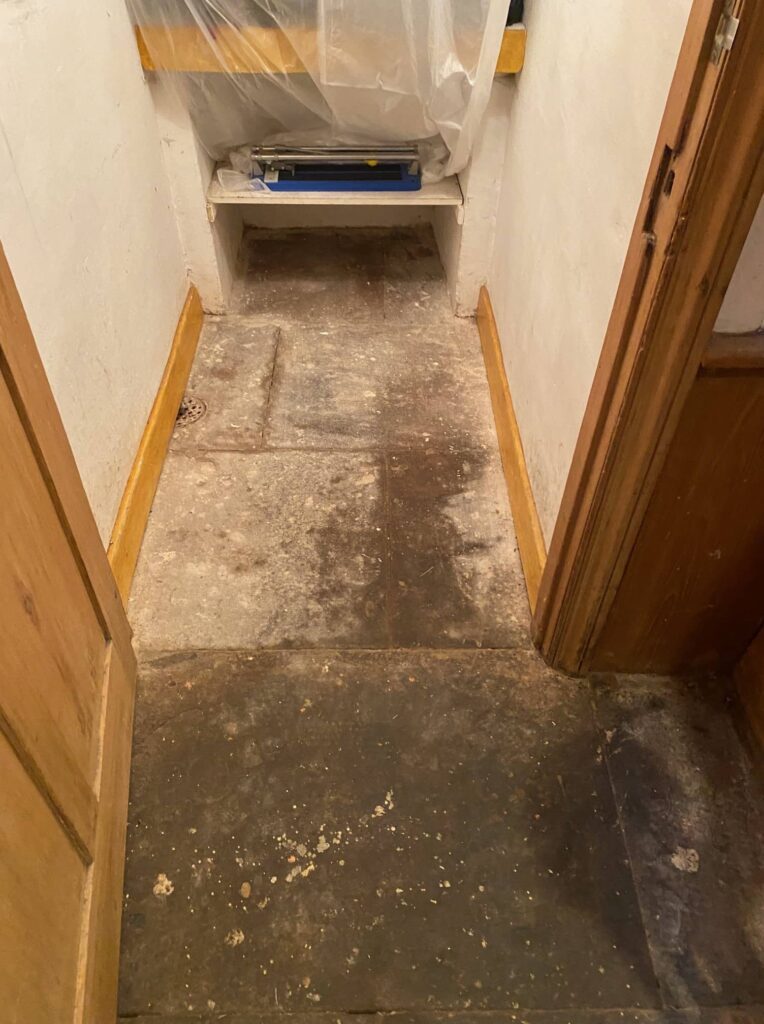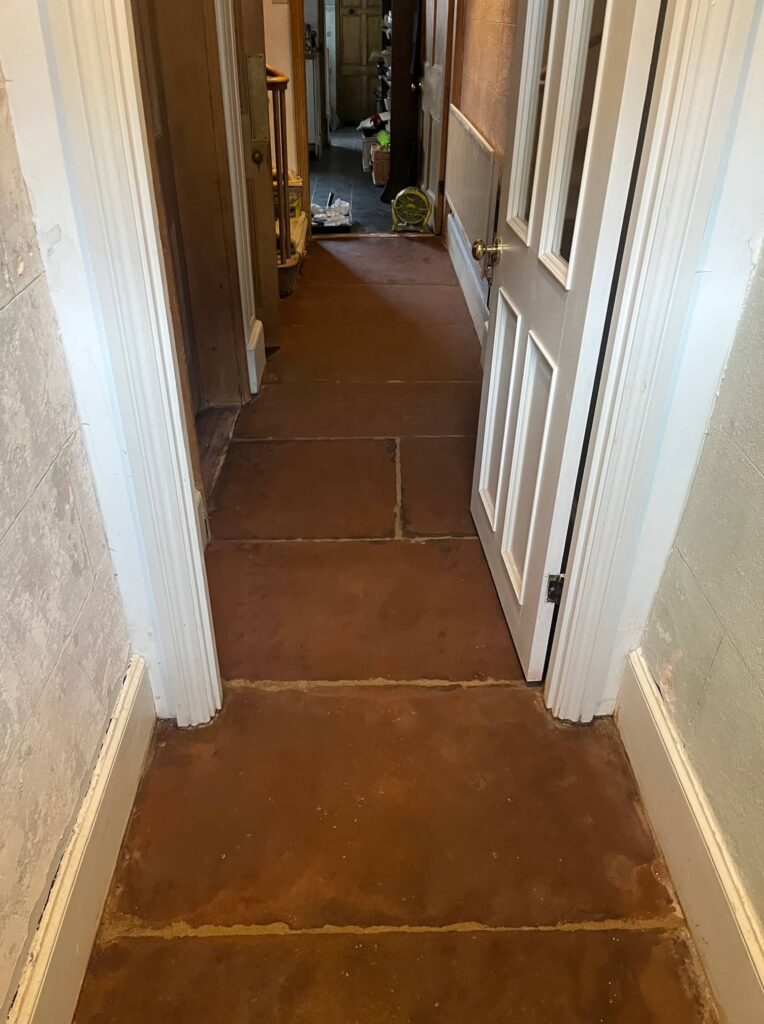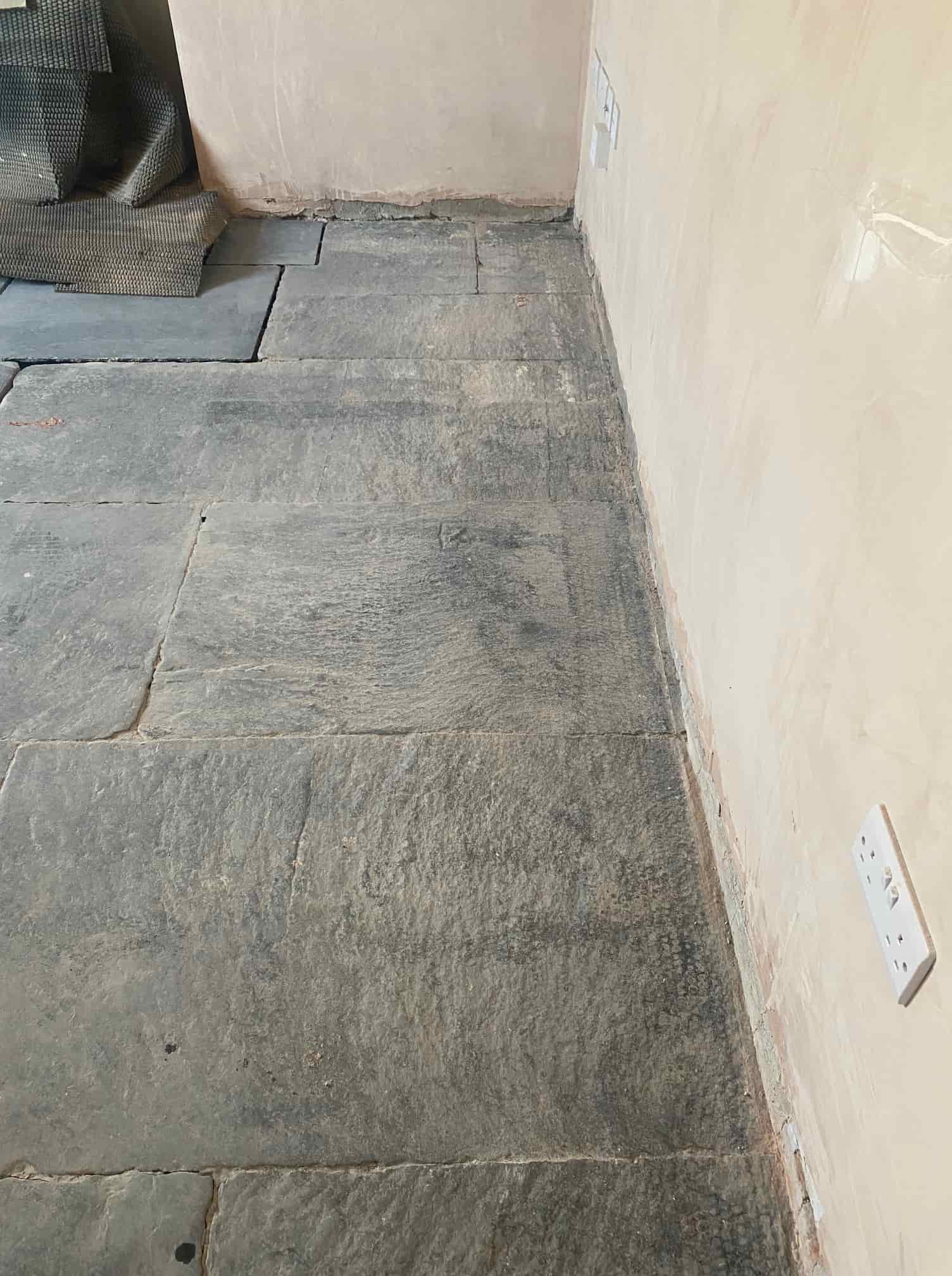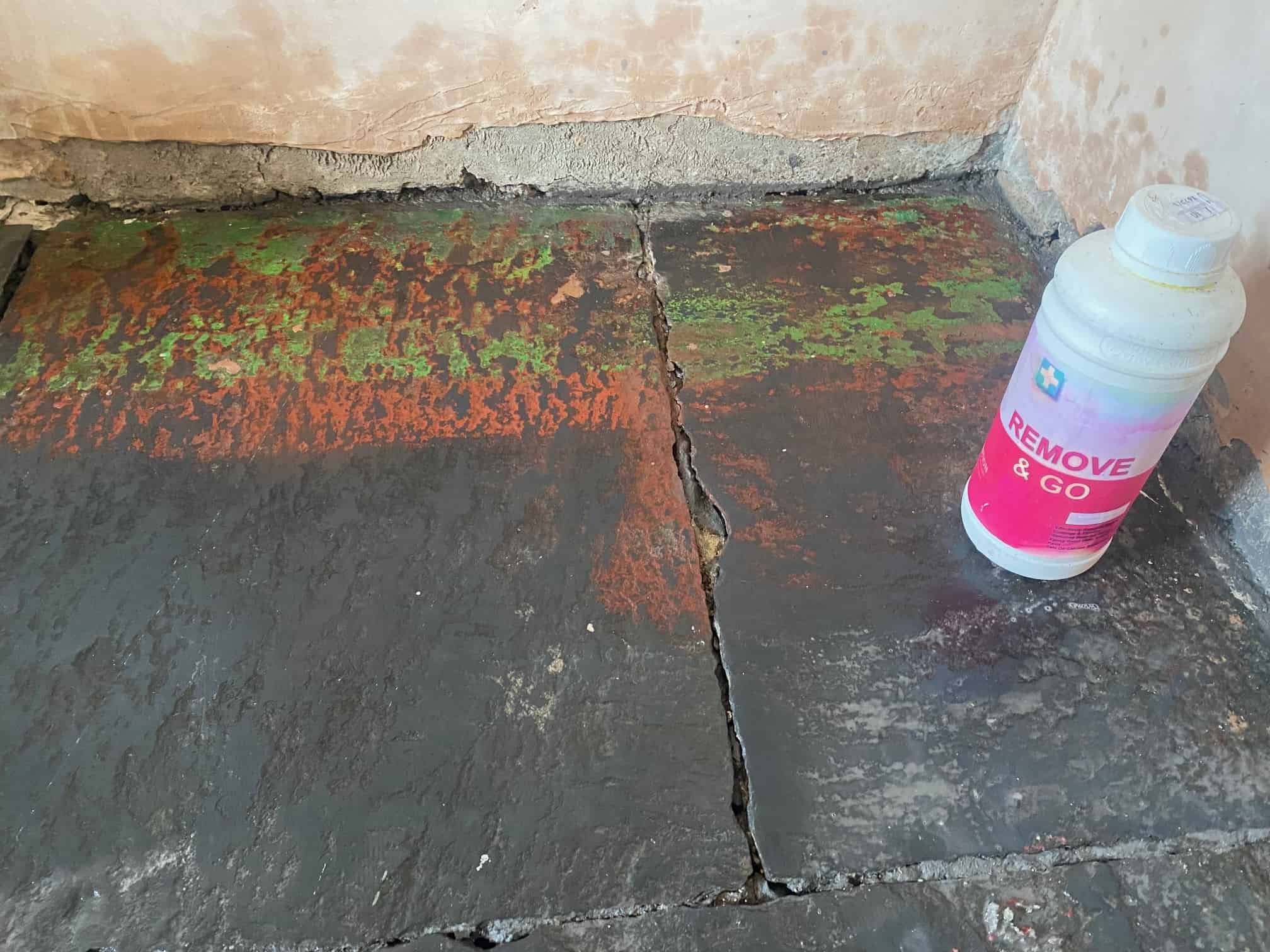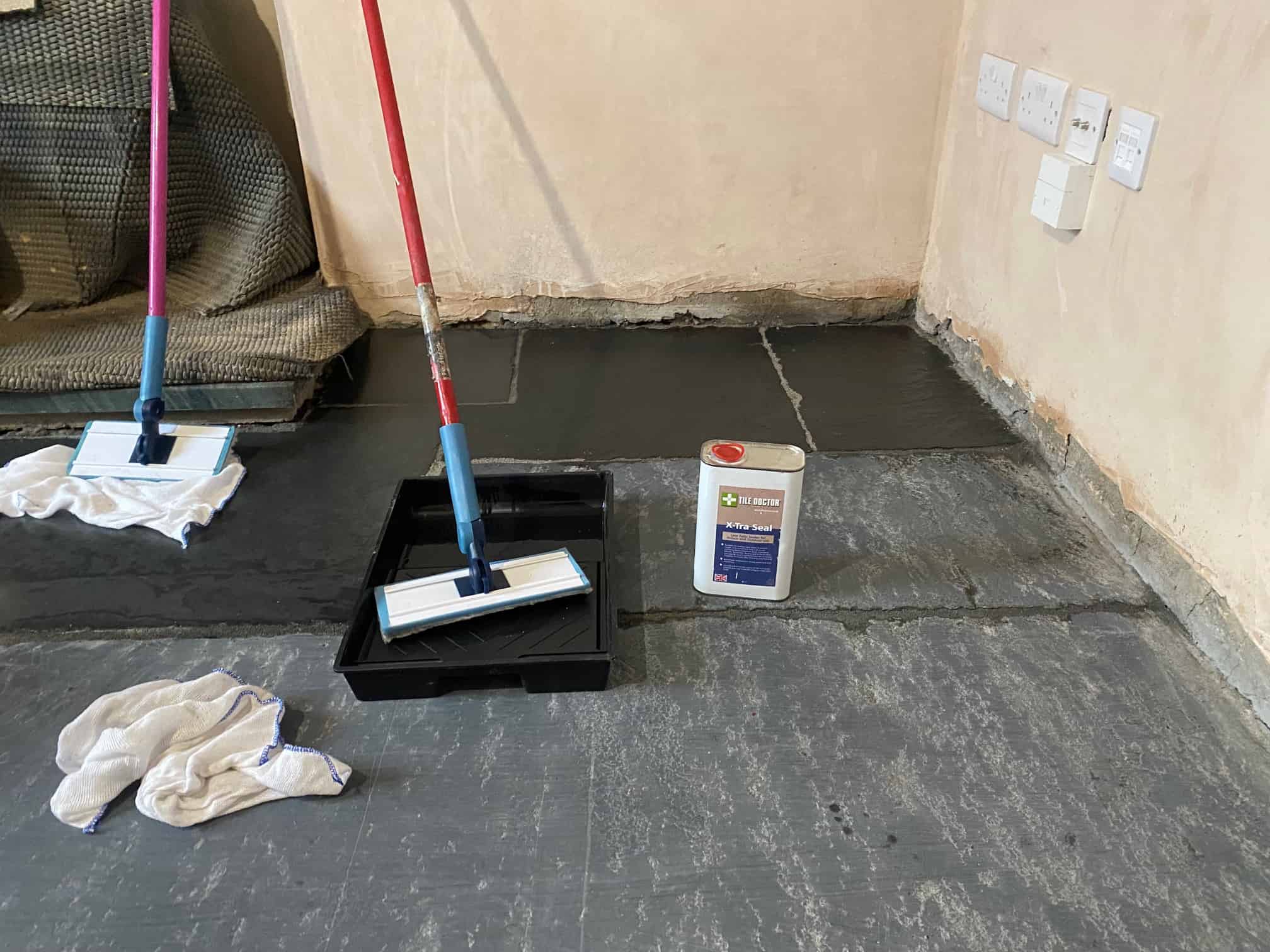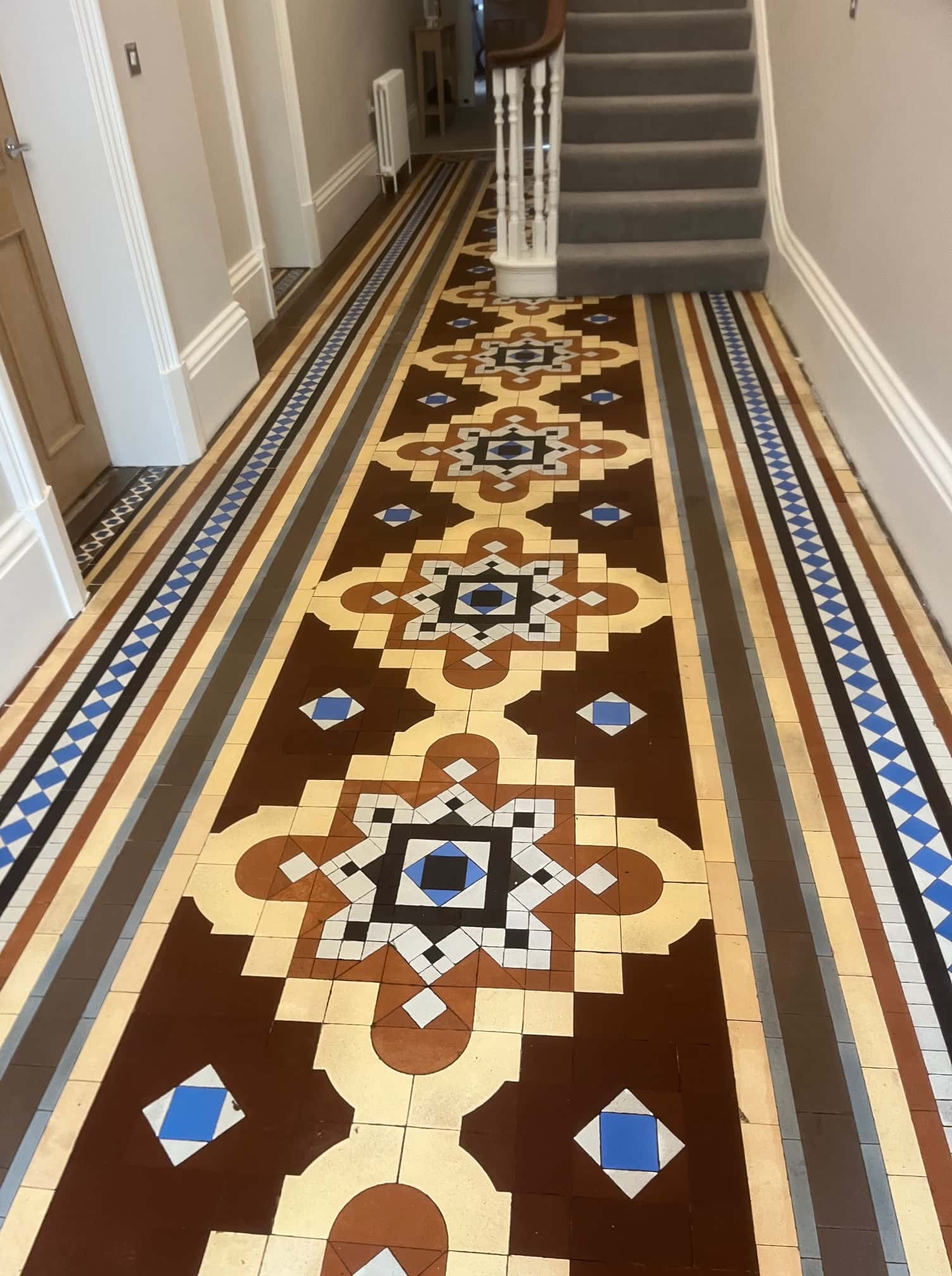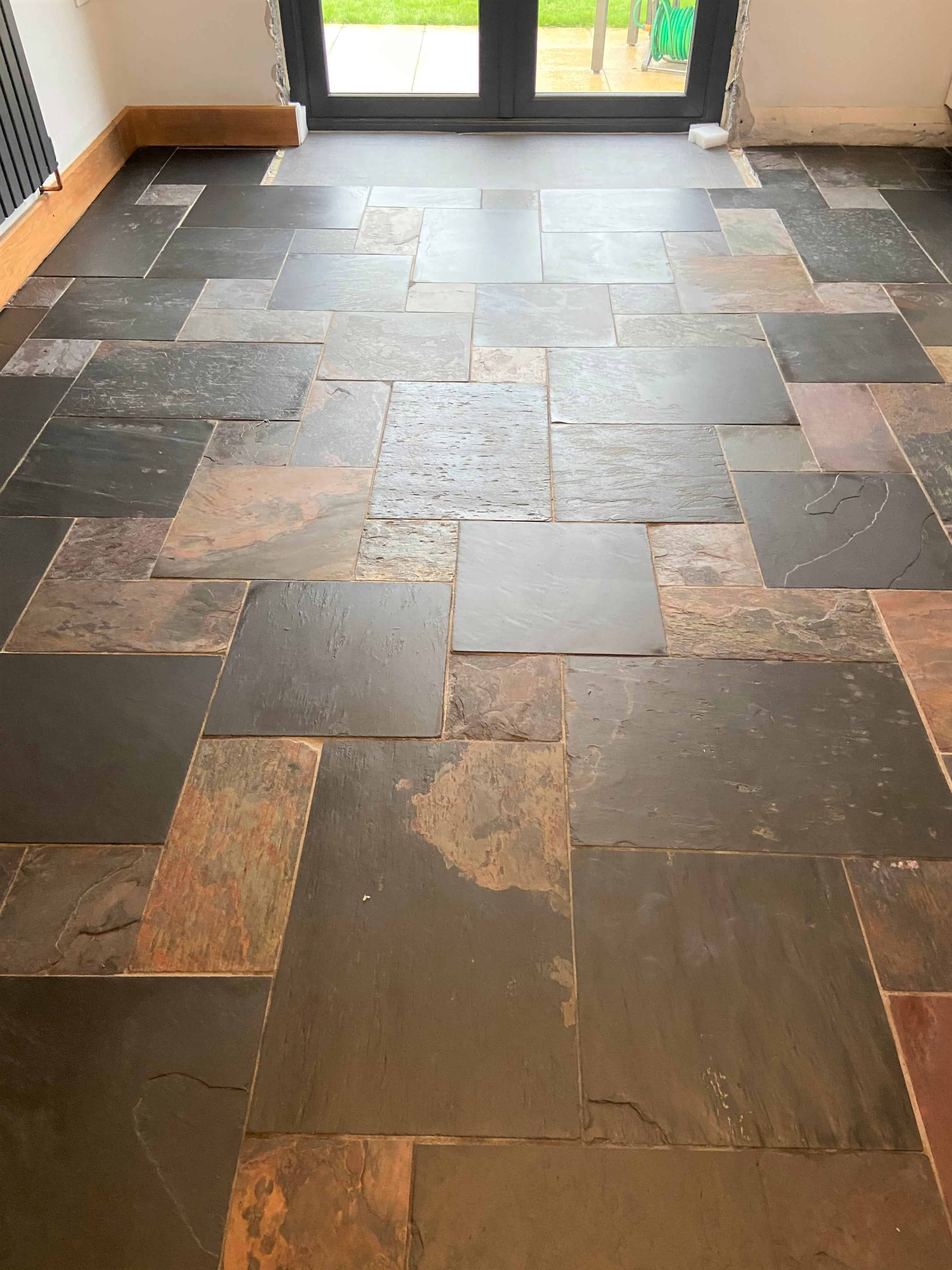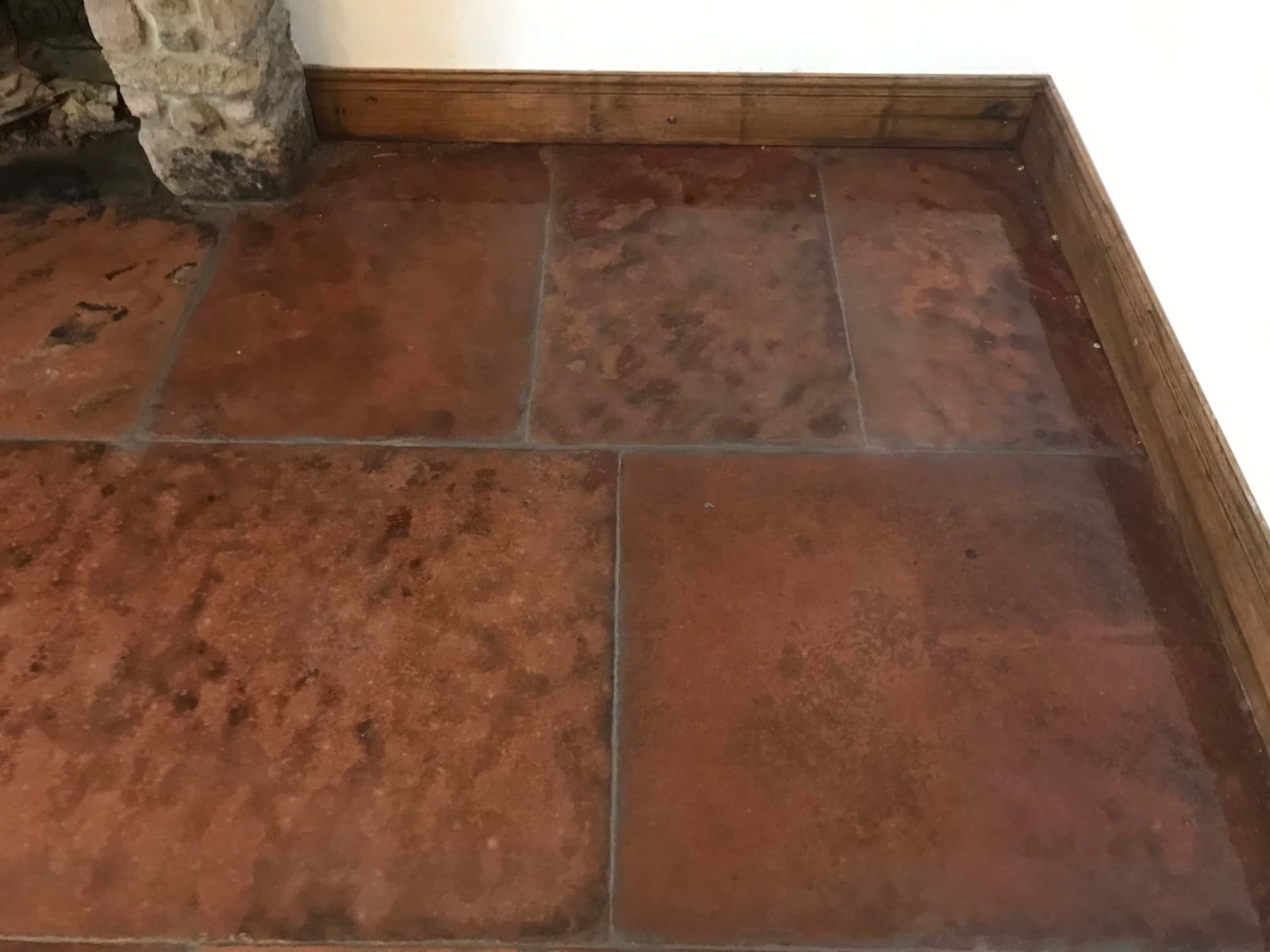Aldous Red Sandstone Floor Milled Back to Health in Greystoke
The customer at this 200-year-old property near Greystoke asked if we could do anything for their old Stone floor as a new Kitchen was to be fitted and a decision had to be made to either rip up the old floor or have it restored.

The stone was Aldous Red Sandstone which if you have read our website is something we are quite familiar with. One thing we have learned from restoring these floors over the years is that they are very forgiving and the best way to renovate them is to grind off the old and often badly stained surface. We call this process Milling and it involves applying different grades of coarse diamond pads, the result is a fresh new surface that smoother and much easier to maintain. We can also re-point the mortar which is often past its best on these old stone floors.
Having discussed my recommendation, they agreed to go ahead, and we set a date in the diary for the work to start.
Milling Aldous Red Sandstone
Milling involves the application of several coarse grades of hard diamond pads to the stone using water to lubricate the process, the water also helps make the removal of the soil easier and reduces dust. I followed our usual method of starting with a very coarse 50-grit pad and then moved up to 100 and then 200-grit milling pads rinsing and extracting the soiling in-between each pad with a wet vacuum. These 17-inch pads fit a rotary floor buffer that has weight added to ensure maximum traction between the pad and the stone floor.
Once done the next step was to rake out the loose mortar between the slabs, cleanup the area and then repoint with a breathable pointing mix in Light Grey. That was left to set and the floor was given a light clean with Tile Doctor Pro-Clean to remove any dust and get it ready for sealing.
Sealing a Red Sandstone Tiled Floor
We returned the following day and checked the floor was dry using the moisture meter, we don’t recommend applying a sealer to a damp floor as the sealer will not cure properly. All was well, so we then applied Tile Doctor X-Tra Seal which is an oil based Breathable Colour enhancing sealer.
Using a breathable sealer on old stone floors like this is highly recommend as these floors rarely have a damp proof membrane installed and so it’s important to give moisture a way of rising through the floor naturally and evaporating rather than being trapped under the floor where it can eventually build up in the walls.
You can see from the photos that the work was transformational and have added new life to a 200-year-old floor which I’m sure will look even more stunning once the new kitchen has been fitted.

For aftercare cleaning of a sealed floor, we recommend the use of Tile Doctor Neutral Tile Cleaner, it’s a mild but effective cleaning product that won’t impact the sealer.
Professional Restoration of an Aldous Red Sandstone Paved Floor in North Cumbria
Aldous Red Sandstone Floor Milled Back to Health in Greystoke Read More »



